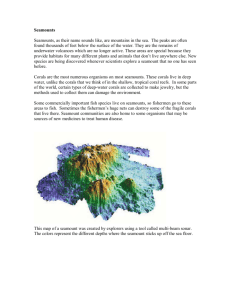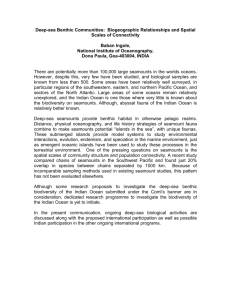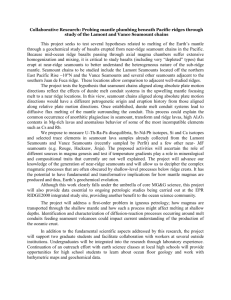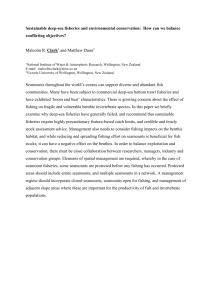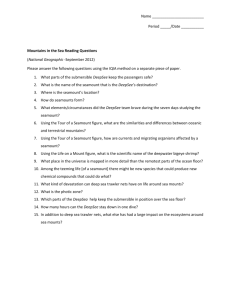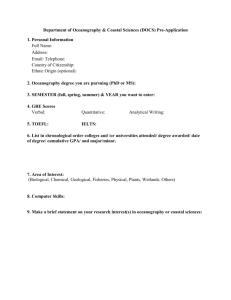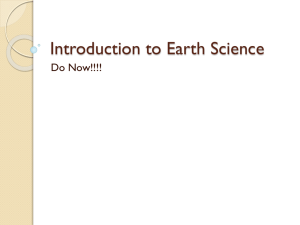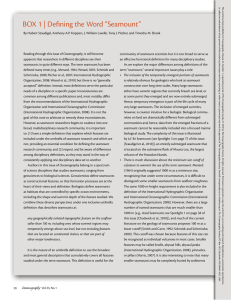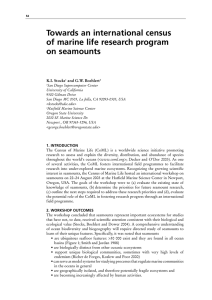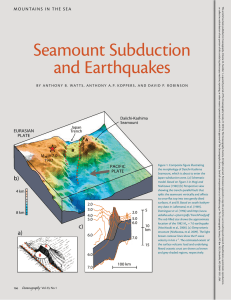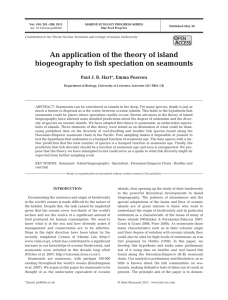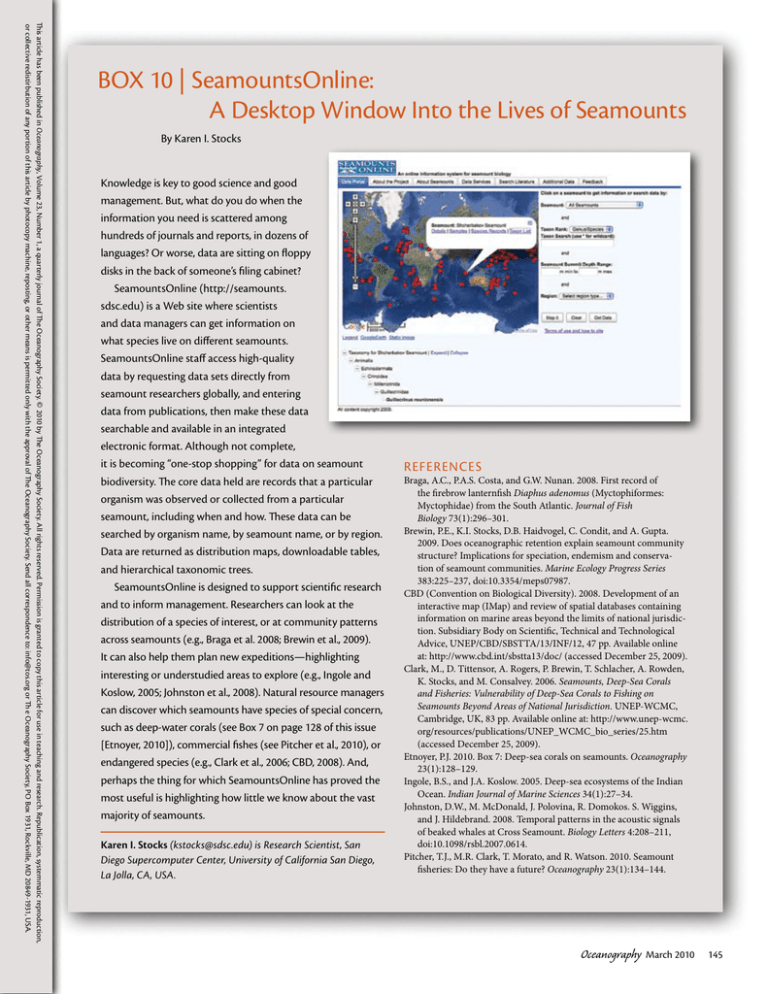
This article has been published in Oceanography, Volume 23, Number 1, a quarterly journal of The Oceanography Society. © 2010 by The Oceanography Society. All rights reserved. Permission is granted to copy this article for use in teaching and research. Republication, systemmatic reproduction,
or collective redistirbution of any portion of this article by photocopy machine, reposting, or other means is permitted only with the approval of The Oceanography Society. Send all correspondence to: info@tos.org or Th e Oceanography Society, PO Box 1931, Rockville, MD 20849-1931, USA.
BOX 10 | SeamountsOnline:
A Desktop Window Into the Lives of Seamounts
By Karen I. Stocks
Knowledge is key to good science and good
management. But, what do you do when the
information you need is scattered among
hundreds of journals and reports, in dozens of
languages? Or worse, data are sitting on floppy
disks in the back of someone’s filing cabinet?
SeamountsOnline (http://seamounts.
sdsc.edu) is a Web site where scientists
and data managers can get information on
what species live on different seamounts.
SeamountsOnline staff access high-quality
data by requesting data sets directly from
seamount researchers globally, and entering
data from publications, then make these data
searchable and available in an integrated
electronic format. Although not complete,
it is becoming “one-stop shopping” for data on seamount
biodiversity. The core data held are records that a particular
organism was observed or collected from a particular
seamount, including when and how. These data can be
searched by organism name, by seamount name, or by region.
Data are returned as distribution maps, downloadable tables,
and hierarchical taxonomic trees.
SeamountsOnline is designed to support scientific research
and to inform management. Researchers can look at the
distribution of a species of interest, or at community patterns
across seamounts (e.g., Braga et al. 2008; Brewin et al., 2009).
It can also help them plan new expeditions—highlighting
interesting or understudied areas to explore (e.g., Ingole and
Koslow, 2005; Johnston et al., 2008). Natural resource managers
can discover which seamounts have species of special concern,
such as deep-water corals (see Box 7 on page 128 of this issue
[Etnoyer, 2010]), commercial fishes (see Pitcher et al., 2010), or
endangered species (e.g., Clark et al., 2006; CBD, 2008). And,
perhaps the thing for which SeamountsOnline has proved the
most useful is highlighting how little we know about the vast
majority of seamounts.
Karen I. Stocks (kstocks@sdsc.edu) is Research Scientist, San
Diego Supercomputer Center, University of California San Diego,
La Jolla, CA, USA.
REFERENCES
Braga, A.C., P.A.S. Costa, and G.W. Nunan. 2008. First record of
the firebrow lanternfish Diaphus adenomus (Myctophiformes:
Myctophidae) from the South Atlantic. Journal of Fish
Biology 73(1):296–301.
Brewin, P.E., K.I. Stocks, D.B. Haidvogel, C. Condit, and A. Gupta.
2009. Does oceanographic retention explain seamount community
structure? Implications for speciation, endemism and conservation of seamount communities. Marine Ecology Progress Series
383:225–237, doi:10.3354/meps07987.
CBD (Convention on Biological Diversity). 2008. Development of an
interactive map (IMap) and review of spatial databases containing
information on marine areas beyond the limits of national jurisdiction. Subsidiary Body on Scientific, Technical and Technological
Advice, UNEP/CBD/SBSTTA/13/INF/12, 47 pp. Available online
at: http://www.cbd.int/sbstta13/doc/ (accessed December 25, 2009).
Clark, M., D. Tittensor, A. Rogers, P. Brewin, T. Schlacher, A. Rowden,
K. Stocks, and M. Consalvey. 2006. Seamounts, Deep-Sea Corals
and Fisheries: Vulnerability of Deep-Sea Corals to Fishing on
Seamounts Beyond Areas of National Jurisdiction. UNEP-WCMC,
Cambridge, UK, 83 pp. Available online at: http://www.unep-wcmc.
org/resources/publications/UNEP_WCMC_bio_series/25.htm
(accessed December 25, 2009).
Etnoyer, P.J. 2010. Box 7: Deep-sea corals on seamounts. Oceanography
23(1):128–129.
Ingole, B.S., and J.A. Koslow. 2005. Deep-sea ecosystems of the Indian
Ocean. Indian Journal of Marine Sciences 34(1):27–34.
Johnston, D.W., M. McDonald, J. Polovina, R. Domokos. S. Wiggins,
and J. Hildebrand. 2008. Temporal patterns in the acoustic signals
of beaked whales at Cross Seamount. Biology Letters 4:208–211,
doi:10.1098/rsbl.2007.0614.
Pitcher, T.J., M.R. Clark, T. Morato, and R. Watson. 2010. Seamount
fisheries: Do they have a future? Oceanography 23(1):134–144.
Oceanography
March 2010
145

